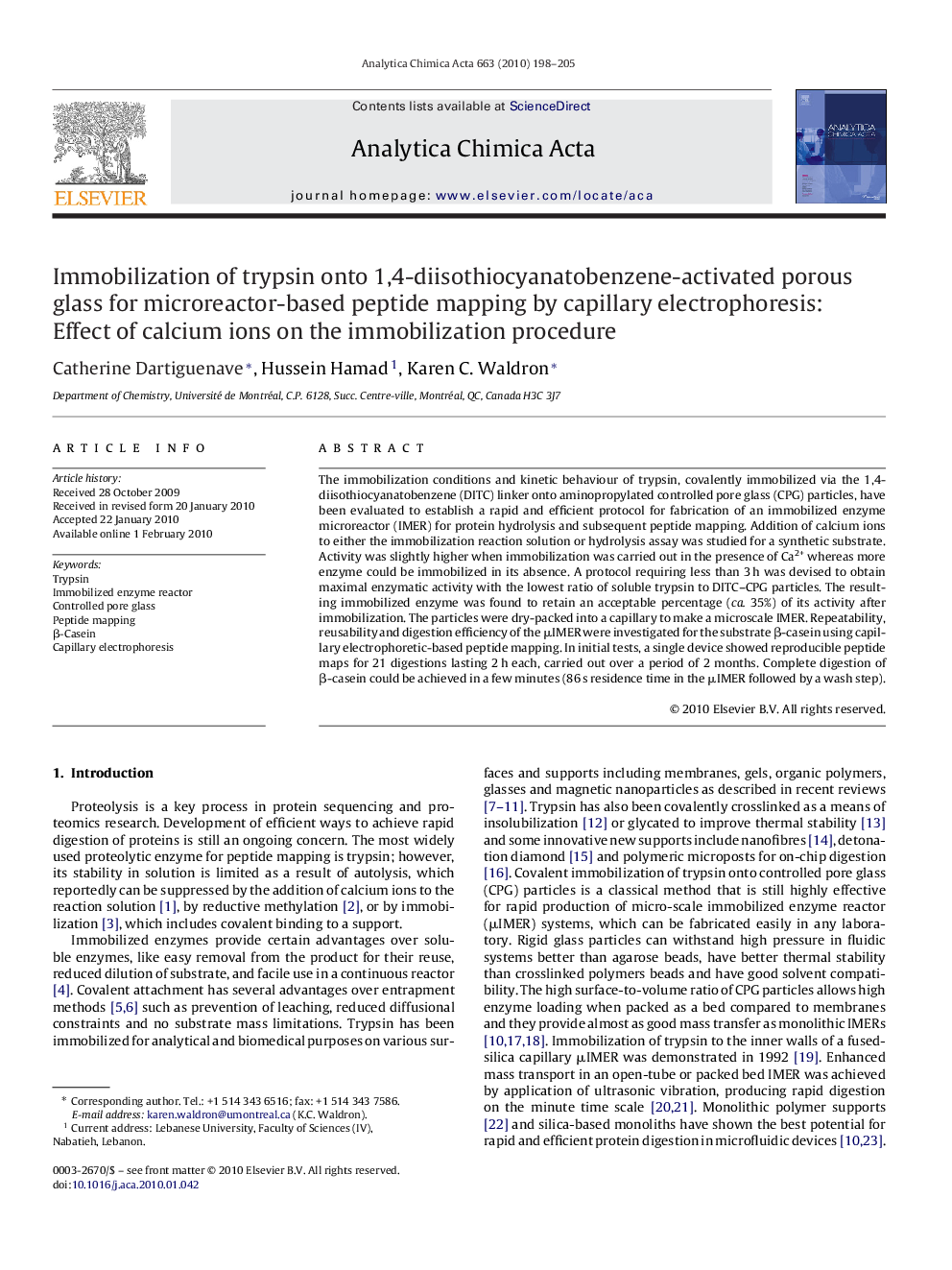| Article ID | Journal | Published Year | Pages | File Type |
|---|---|---|---|---|
| 1167888 | Analytica Chimica Acta | 2010 | 8 Pages |
The immobilization conditions and kinetic behaviour of trypsin, covalently immobilized via the 1,4-diisothiocyanatobenzene (DITC) linker onto aminopropylated controlled pore glass (CPG) particles, have been evaluated to establish a rapid and efficient protocol for fabrication of an immobilized enzyme microreactor (IMER) for protein hydrolysis and subsequent peptide mapping. Addition of calcium ions to either the immobilization reaction solution or hydrolysis assay was studied for a synthetic substrate. Activity was slightly higher when immobilization was carried out in the presence of Ca2+ whereas more enzyme could be immobilized in its absence. A protocol requiring less than 3 h was devised to obtain maximal enzymatic activity with the lowest ratio of soluble trypsin to DITC–CPG particles. The resulting immobilized enzyme was found to retain an acceptable percentage (ca. 35%) of its activity after immobilization. The particles were dry-packed into a capillary to make a microscale IMER. Repeatability, reusability and digestion efficiency of the μIMER were investigated for the substrate β-casein using capillary electrophoretic-based peptide mapping. In initial tests, a single device showed reproducible peptide maps for 21 digestions lasting 2 h each, carried out over a period of 2 months. Complete digestion of β-casein could be achieved in a few minutes (86 s residence time in the μIMER followed by a wash step).
